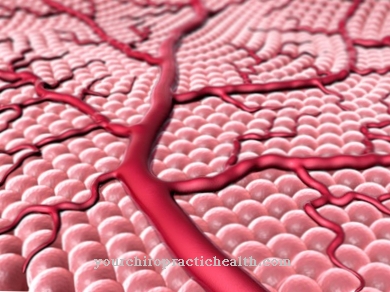When was the last rule, when was the first, and at what time interval does it appear? The gynecologist usually opens the consultation hour interview with his patient with these questions. A guide to menstruation, menstruation, periods and ovulation.
Menstruation & Period
If one takes into account that there are still terms such as menstruation, menses, period, menstrual bleeding or malaise in everyday language and, strangely enough, it was previously not allowed to talk about this, then the necessity may arise to understand this complicated, important occurrence in To fathom the life of every woman and its causes.
Unfortunately, we experience time and again that even professionally very hardworking, generally open-minded women still pay too little attention to this natural process and often cannot provide sufficient information on these questions. Therefore, the necessary requirement that you should bring with you to all medical consultations and examinations is already expressed here.
Menstruation occurs periodically every 3 to 4 weeks between the ages of 12, 13, 14 and between the ages of 45 and 50 and is noticeable through bleeding from the uterus. It used to be seen as a periodic cleansing of the body from "unclean juices" or even poisons, which however was completely lacking in scientific basis.
Years of scientific research have shown that menstruation is a constant sequence of processes in the uterine lining, from its structure to its breakdown or rejection, in conjunction with hormonal influences and events on the ovary under the control of the central nervous system. That is why one speaks of an ovarian-mental cycle or simply of the cycle.
Ovarian maturation
Already in newborn girls there are around 400,000 urine eggs of the tiniest size in the two ovaries (ovaries), each of which consists of a large, loose cell body with a vesicular nucleus and is surrounded on the outside by a membrane and cells (follicular epithelia). This whole structure is called the primary follicle. Over the years, the cell layer increases and secretes the follicular hormone that controls typical female development, as well as fluid. Ultimately, follicles develop, which, however, repeatedly perish within the ovary until sexual maturity.
Later, with the onset of puberty, the follicular maturation hormone is released by impulses from the central organ of the sexual functions, the diencephalon, to the pituitary gland, the anterior lobe of the pituitary gland. This allows the follicle to develop fully. It can mature, and it also increases follicular hormone production. This in turn causes the fallopian tubes, uterus and vagina to enlarge.
The uterine lining in particular receives numerous growth and structural stimuli, so that it develops from just under a millimeter to 3 to 4 millimeters thick and becomes richer in glands (proliferation phase).At the same time, the follicle in the ovary grows to 1 to 1 ½ centimeters in diameter and reaches the outer surface, where it normally bursts between the 13th and 16th day, calculated from the beginning of the last period.
This process is called follicle or ovulation (ovulation). Since the egg can only be fertilized for a few hours, this is the time for fertilization. As is known, the male semen can reach the fallopian tubes 1 to 2 hours after sexual intercourse and remain capable of fertilization for about 2 days.
Symptoms & signs of ovulation

Some women can indicate their ovulation by means of a feeling of tension in the abdomen, fatigue, swelling of the nipples and the like. Exact information is only given by a basal temperature curve over several months, which shows a significant increase in temperatures at the time of ovulation. A prerequisite, however, is that every morning after waking up, before getting up, measurements are taken on the anus for about 5 minutes, if possible at the same time and with the same thermometer.
The second half of the cycle or secretion phase shows further growth and a winding of the uterine mucous membrane glands to a thickness of about 5 to 6 millimeters up to the point of bleeding, whereby a saw-shaped, jagged edge can be observed in the glandular tubes.
After this swelling, the glands begin to clearly prepare and secrete secretion from about the 19th to 20th day, which contains practically all the nutrients needed to maintain the possibly fertilized egg. The egg bed, which is prepared in the truest sense of the word in the form of the uterine lining, contains sugar, protein, fats and even minerals.
For these preparations, too, neuro-hormonal control occurs again, that is, impulses from the diencephalon transmitted to the pituitary cause the pituitary to secrete another hormone that causes the follicular epithelial cells to transform into corpus luteum cells. In the emptied, closed follicular cavity, fatty substances are formed and stored, which show a yellow discoloration, hence the name money body. In addition, with increasing growth (blooming) the corpus luteum secretes the corpus luteum hormone to the uterus, which promotes the growth of the mucous membrane in the manner already mentioned, including secretion.
Failure of fertilization
If fertilization does not take place, i.e. if the egg dies, then the corpus luteum regresses within 14 days in the ovary and finally scars. This regression is accompanied by a decrease in hormone production. The lining of the uterus receives no further growth stimuli and collapses, so to speak. With the bleeding that starts at the same time, it is expelled and expelled except for a very narrow strip that sits on the uterine muscles. This process alone is called menstruation. So it is a nil pregnancy.
Normal menstrual bleeding lasts 3 to 5 days, with a total of 50 to 100 grams of blood being exuded. This corresponds approximately to a daily consumption of 3 to 6 sanitary towels or tampons. If it exceeds 7 days, a medical examination is indicated. It is well known that menstrual blood does not clot and usually has a bland odor. If it becomes extremely bad smelling, decomposition phenomena are in progress. In order to prevent this, one should be careful when using tampons during the period, that is, they have to be changed at least 5 to 6 times a day.
The menstrual cycle changes from the onset of the bleeding to the last day before the next and averages 28 days, rarely just 21 days. It often fluctuates by several days, even in healthy women, with large deviations indicating disturbances in the hormonal balance and psychological influences.
You can find your medication here
➔ Medicines for menstrual cramps



























